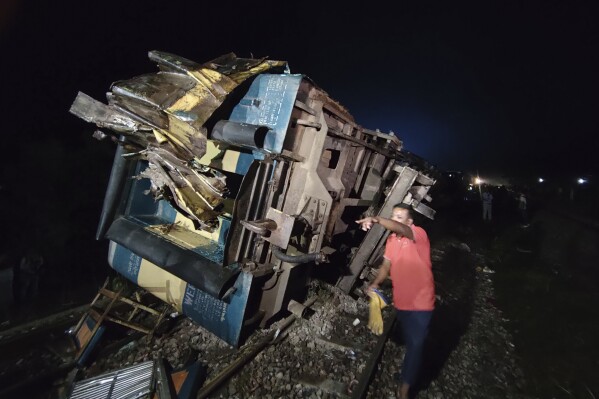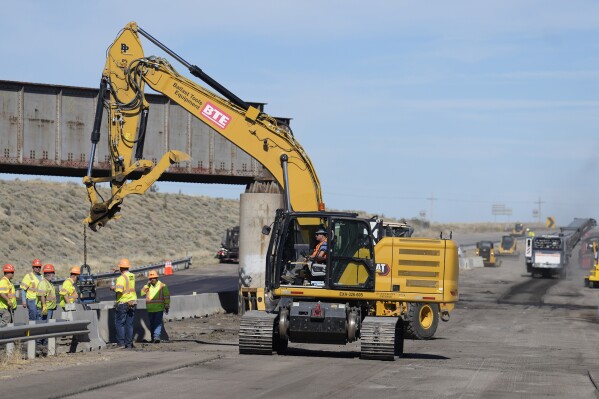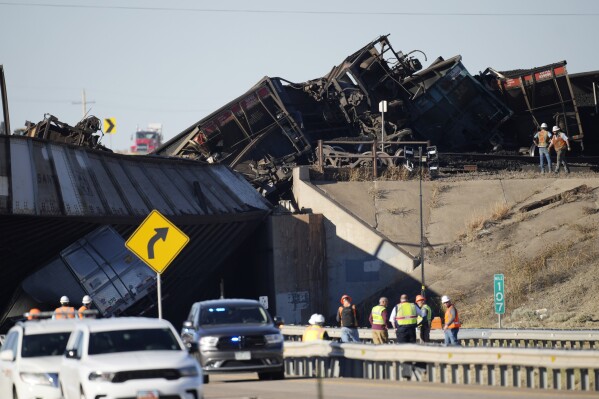Norfolk Southern investing in automated inspection systems on its railroad to improve safety
OMAHA, Neb. (AP) — To help quickly spot safety defects on moving trains, Norfolk Southern said Thursday it has installed the first of more than a dozen automated inspection portals on its tracks in Ohio — not far from where one of its trains careened off the tracks in February and spilled hazardous chemicals that caught fire.
The new portals, equipped with high-speed cameras, will take hundreds of pictures of every passing locomotive and rail car. The pictures are analyzed by artificial intelligence software the railroad developed.
The first of these new portals was recently installed on busy tracks in Leetonia, Ohio, less than 15 miles (24 kilometers) from where that train derailed in East Palestine in February.
Other major railroads have invested in similar inspection technology as they look for ways to supplement — and sometimes try to replace where regulators allow it — the human inspections that the industry has long relied on to keep its trains safe. Rail unions have argued that the new technology shouldn’t replace inspections by well-trained carmen.
 Bodies of 17 recovered after Bangladesh train crash that may have been due to disregarded red light
Bodies of 17 recovered after Bangladesh train crash that may have been due to disregarded red light
 I-25 in Colorado set to reopen Thursday after train derailment collapsed bridge and killed trucker
I-25 in Colorado set to reopen Thursday after train derailment collapsed bridge and killed trucker
 Broken rail caused fatal Colorado train derailment that collapsed bridge, early findings show
Broken rail caused fatal Colorado train derailment that collapsed bridge, early findings show
University of Delaware professor Allan Zarembski, who leads the Railroad Engineering and Safety Program there, said it’s significant that Norfolk Southern is investing in so many of the portals. By contrast, CSX just announced earlier this year that it had opened a third such inspection portal.
David Clarke, the former director of the University of Tennessee’s Center for Transportation Research, said this technology can likely help spot defects that develop while a train is moving better than an worker stationed near the tracks can.
“It’s much harder for a person to inspect a moving car than a stationary one,” Clarke said. “The proposed system can ‘see’ the entirety of the passing vehicle and, through image processing, is probably able to find conditions not obvious to the human viewer along the track.”
Norfolk Southern said it expects to have at least a dozen of them installed across its 22-state network in the East by the end of 2024. The Atlanta-based railroad didn’t say how much it is investing in the technology it worked with Georgia Tech to develop.
“We’re going to get 700 images per rail car -- terabytes of data -- at 60 miles an hour, processed instantaneously and sent to people who can take action on those alerts in real time,” said John Fleps, the railroad’s vice president of safety.
A different kind of defect detector triggered an alarm about an overheating bearing just before the East Palestine derailment, but there wasn’t enough time for the crew to stop the train.
That crash put the spotlight on railroad safety nationwide and prompted calls for reforms. Since then, safety has dominated CEO Alan Shaw’s time.
Disclaimer: The copyright of this article belongs to the original author. Reposting this article is solely for the purpose of information dissemination and does not constitute any investment advice. If there is any infringement, please contact us immediately. We will make corrections or deletions as necessary. Thank you.







